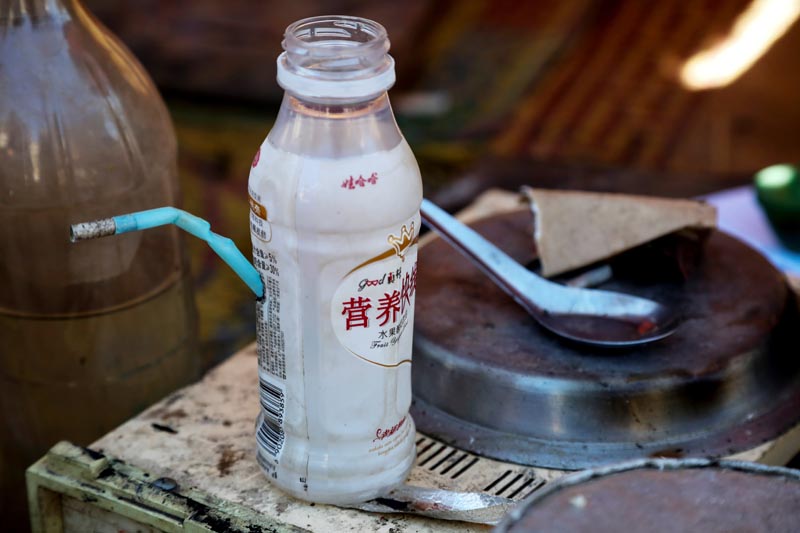Police chase suspected kingpin of vast Asian meth syndicate
BANGKOK: The largest ever task force assembled to fight organised crime in Asia has identified a long-time drug trafficker, a China-born Canadian national, as the suspected kingpin of a crime syndicate that police say dominates the $70 billion-a-year Asia-Pacific drug trade.
The suspected syndicate leader is Tse Chi Lop, 55, an ex-convict who formerly lived in Toronto and has moved between Macau, Hong Kong and Taiwan in recent years, according to counter-narcotics officers from four countries as well as law enforcement documents reviewed by Reuters. Authorities have not publicly identified Tse as the boss of the drug trafficking group.
The syndicate he is suspected of running is known to its members as “The Company.” Law enforcers also refer to it as “Sam Gor,” or Brother Number Three in Cantonese, after one of Tse’s nicknames.
The Australian Federal Police (AFP), which has taken the lead in the sprawling investigation, has compiled a list of top syndicate members that identifies Tse as “the senior leader of the Sam Gor syndicate.” The group, the list says, has “been connected with or directly involved in at least 13 cases” of drug trafficking since January 2015. The list, reviewed by Reuters, does not provide specific details of the cases.
A flow-chart of the syndicate in a Taiwanese law enforcement document identifies Tse as the “Multinational CEO” of the Sam Gor syndicate. A US Drug Enforcement Administration (DEA) alert circulated among regional government agencies this year says Tse is “believed to be” the leader of the syndicate.
“Brother Number Three is target number one,” said one AFP officer.
Reuters was unable to contact Tse Chi Lop. In response to questions from Reuters, the AFP, the DEA and Taiwan’s Ministry of Justice Investigation Bureau said they would not comment on investigations.
According to interviews with regional law enforcers from eight countries, as well as a review of law enforcement documents, the syndicate produces vast quantities of high-grade methamphetamine in Myanmar and trafficks the drug to countries stretching from Japan to New Zealand. The group is “conservatively” raking in $8 billion a year and could be earning as much as $17.7 billion annually, according to an estimate by the United Nations Office on Drugs and Crime (UNODC).
“Tse Chi Lop is in the league of El Chapo or maybe Pablo Escobar,” said Jeremy Douglas, Southeast Asia and Pacific representative for UNODC, referring to Latin America’s most legendary narco-traffickers. “The word kingpin often gets thrown around, but there is no doubt it applies here.”
The syndicate is the major factor in the fourfold increase in region-wide meth trafficking in the past five years, the UNODC says. The supply of the highly addictive drug has surged, causing the street price to plummet in many countries. In a report in July, the UN agency said the meth trade had reached “unprecedented and dangerous levels,” and was a “direct challenge to the public security and health of the region.”
TRIAD ALLIANCE
The AFP has identified 19 top syndicate leaders, four of whom are Canadian nationals, the target list shows. Other suspected leaders hail from Hong Kong, Macau, mainland China, Taiwan, Malaysia, Myanmar and Vietnam. Some have links to drug trafficking that go back decades, according to the target list and investigators from four countries, who spoke on condition of anonymity.
Tse has not been arrested. Counter-narcotics agents said they suspect he has long been aware he is under surveillance. So far, at least one senior member of the syndicate has been arrested, according to investigators and police documents.
Tse has previously been involved in drug trafficking. In the late 1990s, he was arrested and extradited from Hong Kong to the United States on charges of conspiracy to import heroin into America. He was tried in New York and in 2000 sentenced to nine years in prison, which he mostly served in the federal correctional institution in Elkton, Ohio.
The investigation, which involves about a dozen countries, has been dubbed Operation Kungur. Counter-narcotics agencies from China, Myanmar, the United States and Thailand are also leading participants, along with Australia. Taiwan, while not a formal member, is also assisting.
At the core of the syndicate are at least five triad groups that originated in Hong Kong, Macau, China and Taiwan but which have global reach, AFP officers said. These are the 14K, Wo Shing Wo, Sun Yee On, the Big Circle Gang and the Bamboo Union.
To get its drugs to market, the Sam Gor syndicate works closely with Japan’s Yakuza, Thai organised crime, and Australian motorcycle gangs, among other crime groups, according to regional anti-narcotics agents and documents reviewed by Reuters.
According to regional police sources, the task force has gathered phone intercepts of Tse talking about his drug business, phone call logs linking him to other suspected syndicate members and surveillance footage of Tse with members of the crime group. Reuters has been briefed on this evidence but has not seen it.
The UNODC estimates that the Asia-Pacific methamphetamine trade alone was worth as much as $61.4 billion in 2018, up from an estimated $15 billion just five years earlier. Heroin trafficking was worth up to $10.3 billion in 2018, it said.
The syndicate is suspected to be the major player in both the meth and heroin markets, producing the drugs as well as the hallucinogen ketamine in super-labs in Myanmar’s northeast, where ethnic armed groups control swathes of territory. Police also say the syndicate traffics MDMA, commonly known as ecstasy, and cocaine sourced from Europe and Latin America respectively.
The Myanmar government and police did not respond to questions from Reuters.
Authorities say the drugs are distributed via repurposed fishing vessels that traverse vast distances, hidden in containers aboard other vessels, or transported by vehicles and couriers with backpacks who walk along jungle tracks leading out of the syndicate’s production hub in the heart of Southeast Asia’s Golden Triangle.






